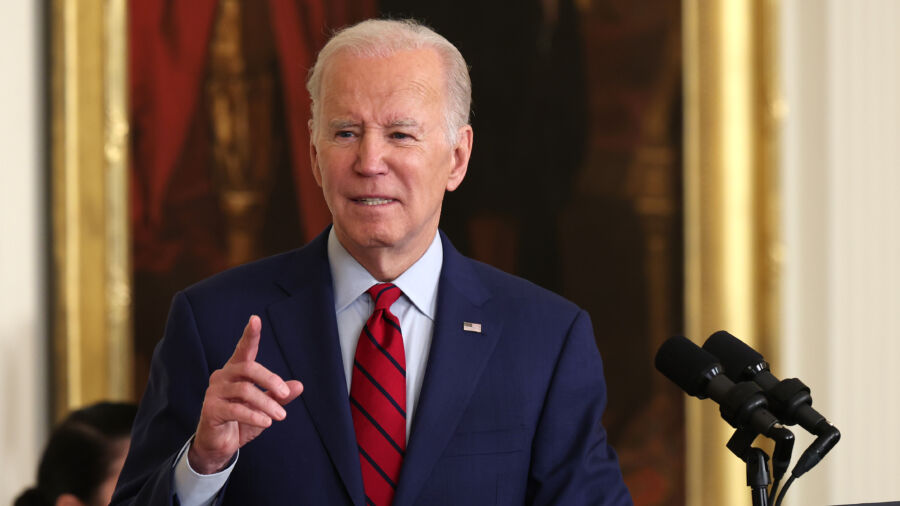President Joe Biden will give the nation’s highest military honor to U.S. Army Captain Larry Taylor for his heroism while serving as a helicopter pilot and rescuing four fellow soldiers in a daring mission during the Vietnam War in 1968.
The White House announced in a statement on Sept. 1 that Mr. Taylor will receive the Medal of Honor on Sept. 5 during a ceremony at the White House.
“Taylor’s conspicuous gallantry, his profound concern for his fellow Soldiers, and his intrepidity at the risk of his life above and beyond the call of duty are in keeping with the highest traditions of military service and reflect great credit upon himself, his unit, and the United States Army,” the White House said.
Mr. Taylor, a Tennessee native, graduated from the University of Tennessee before enlisting in the U.S. Army Reserve in June 1966. After receiving training at the Army Armor School at Fort Knox, Kentucky, he decided to follow a different path and pursued a career as a pilot rather than an armor officer.
In August 1967, Mr. Taylor was sent to South Vietnam, where he flew hundreds of combat missions in UH-1 and Cobra helicopters during his one-year deployment. He was released from active duty in August 1970, having attained the rank of captain, and was discharged from the U.S. Army Reserve on Oct. 17, 1973.
Rescue Mission
On the night of June 18, 1968, Mr. Taylor took off in his attack helicopter to rescue four men on a long-range reconnaissance team that had become surrounded and was in danger of being overrun by enemy troops. He had to figure out a way to get them out, otherwise “they wouldn’t make it.”
David Hill, one of the men Mr. Taylor saved that night, said he and three other soldiers were on a night mission to track the movement of enemy troops in a village near the Saigon River when they were found by North Vietnamese and Viet Cong troops. An intense firefight ensued and soon they were running out of ammunition. They radioed for help.
Mr. Taylor flew off in his attack helicopter, arriving just minutes later at the site northeast of what at the time was Saigon—since renamed Ho Chi Minh City. He asked the patrol team to send up some flares to mark their location in the dark. Mr. Taylor and a pilot in an accompanying helicopter started firing their ships’ mini-guns and aerial rockets at the enemy, making low-level attack runs and braving intense ground fire for about half an hour.
But with both helicopters nearly out of ammunition and the enemy continuing to advance, Mr. Taylor surveyed the team’s intended escape route to a point near the river and concluded that the men would be overrun if they tried to get there, so he had to think of another plan.
Running low on fuel and ammunition, Mr. Taylor directed his wingman to fire the rounds left in his mini-gun along the team’s eastern flank and then head back to base camp, while Mr. Taylor fired his remaining rounds on the western flank. He used the helicopter’s landing lights to distract the enemy, buying time for the patrol team to head south and east toward a different extraction point he had identified.
After they arrived, Mr. Taylor landed under heavy enemy fire and at great personal risk. The four team members rushed toward the helicopter and clung to the exterior—it only had two seats—and Mr. Taylor whisked them away to safety. He was on the ground for about 10 seconds.
“I finally just flew up behind them and sat down on the ground,” Mr. Taylor said during a telephone interview this week. “They turned around and jumped on the aircraft. A couple were sitting on the skids. One was sitting on the rocket pods, and I don’t know where the other one was, but they beat on the side of the ship twice.”
What Mr. Taylor did that night had never before been attempted, the U.S. Army said.
Military Record
According to his University of Tennessee alumni, Mr. Taylor flew “well over 2,000 combat missions” in UH-1 and Cobra helicopters. He was also engaged by enemy fire 340 times and was forced down five times.
Besides earning the military’s highest honor, Mr. Taylor’s other insignia include multiple awards of the Distinguished Flying Cross and Air Medal, which is awarded for single acts of meritorious achievement while participating in aerial flight.
“He was awarded 61 combat decorations, including 44 Air Medals, the Vietnamese Cross of Gallantry, two Bronze Stars, and four Distinguished Flying Crosses,” according to his alumni.
The Medal of Honor, which is the military’s highest decoration given to some service members, is awarded only to members of the U.S. Armed Forces who distinguish themselves conspicuously by gallantry and intrepidity at the risk of their own lives above and beyond the call of duty.
The meritorious conduct must involve great personal bravery or self-sacrifice so conspicuous as to clearly distinguish the individual above his or her comrades and must involve risk of life. Additionally, there must be incontestable proof of the performance of the meritorious conduct.
The Associated Press contributed to this report.

